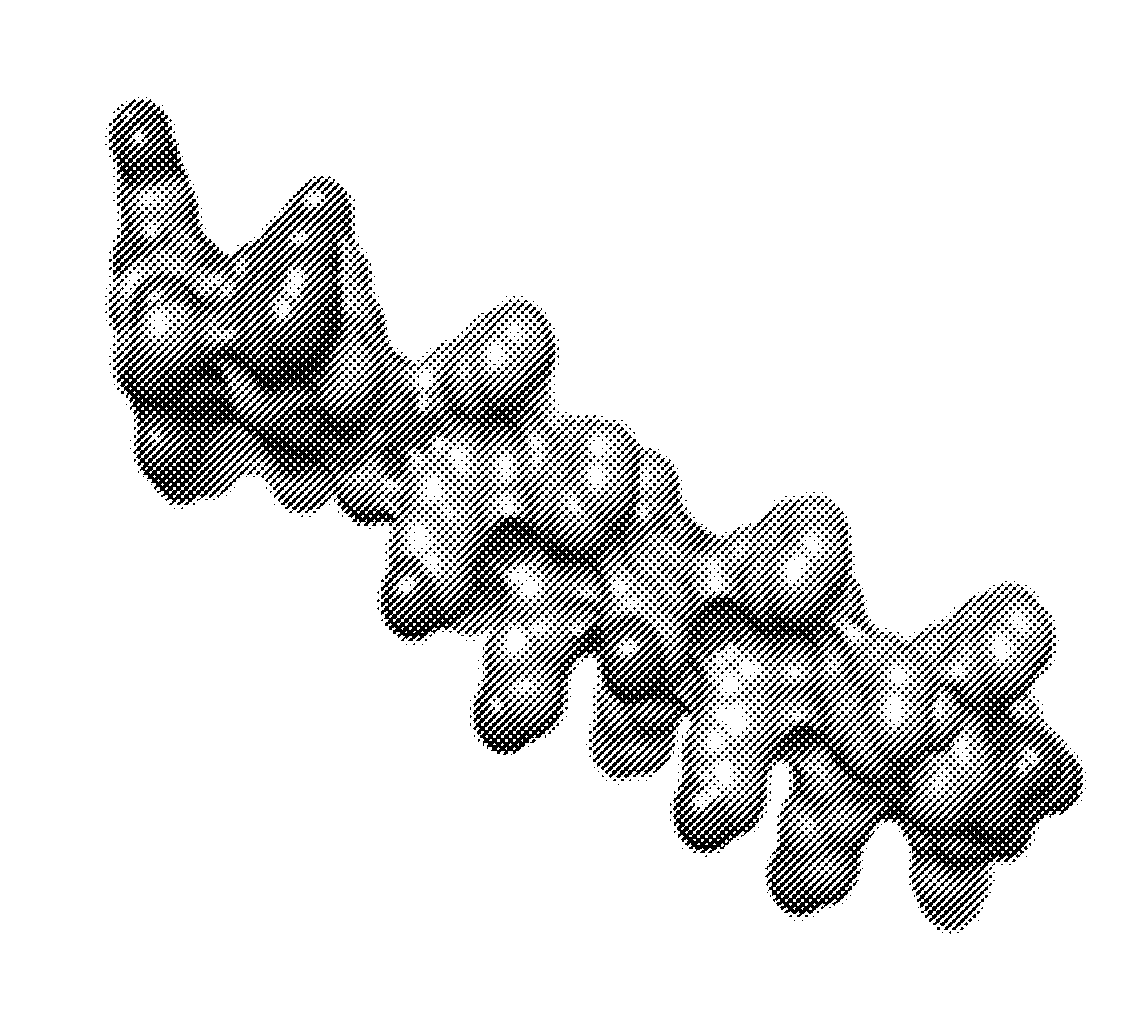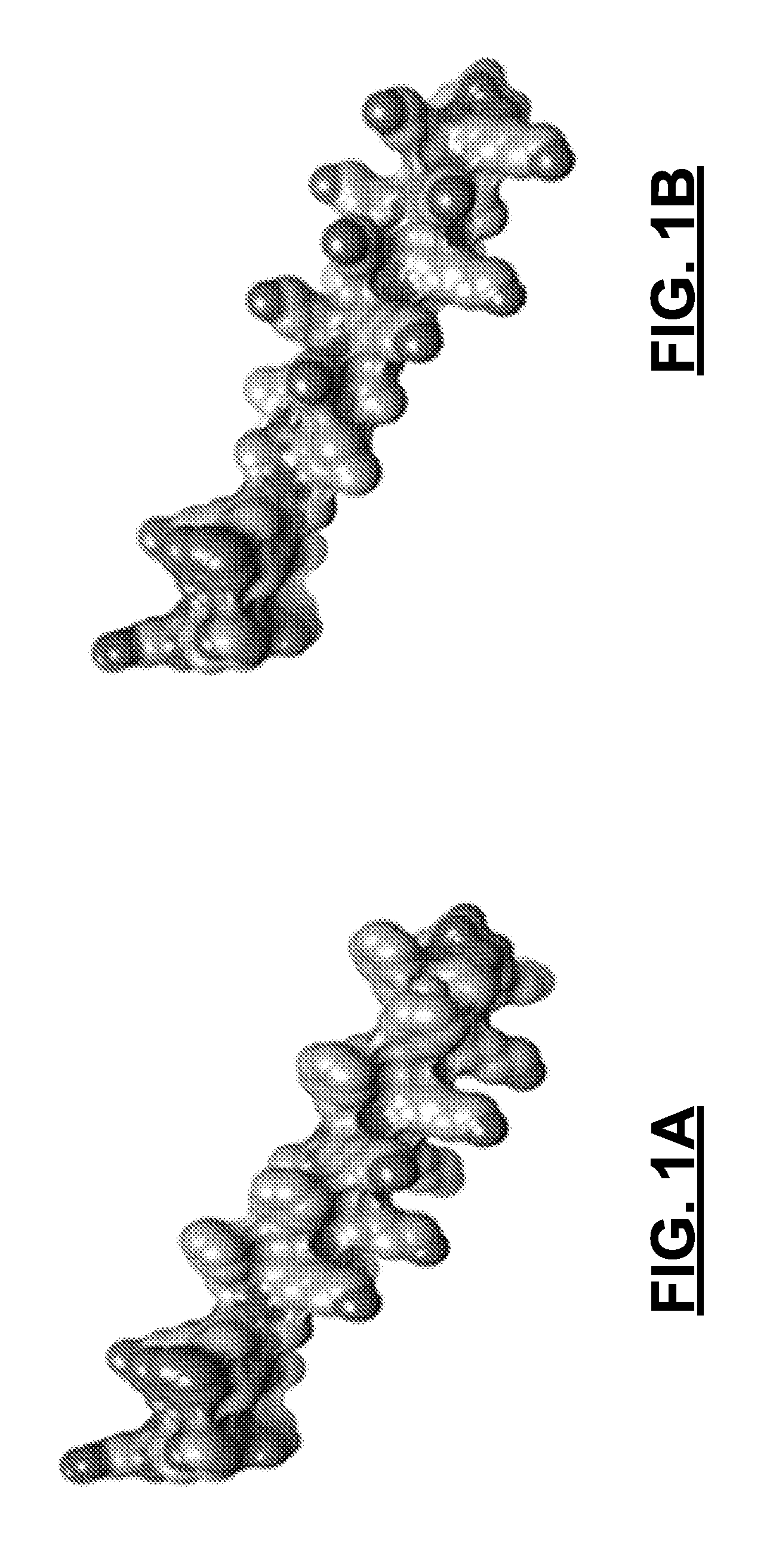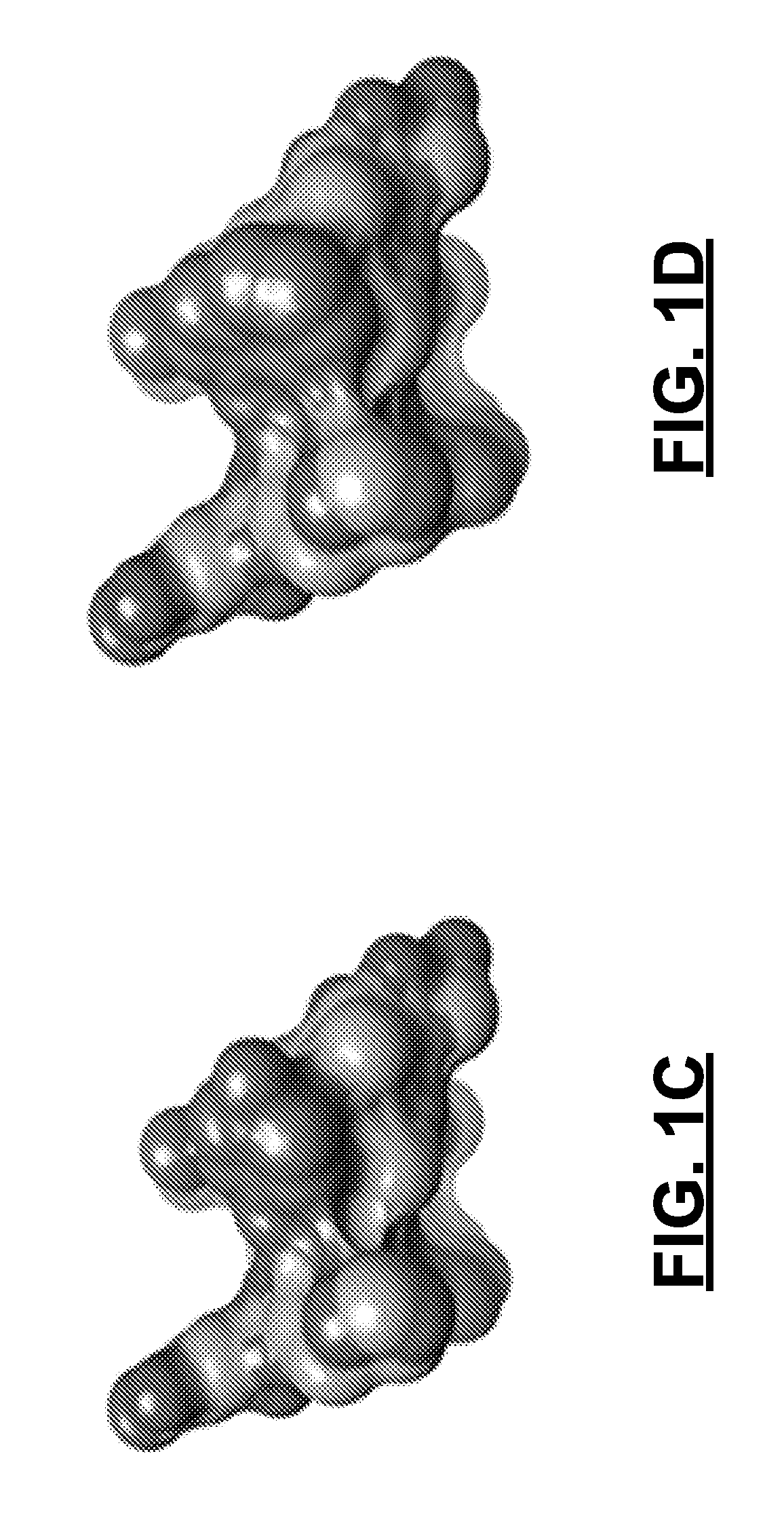Lytic peptides having Anti-proliferative activity against prostate cancer cells
a prostate cancer cell and anti-proliferative technology, applied in the direction of peptides, drug compositions, fungi, etc., can solve the problems that few treatment options, including classical chemotherapeutic agents, have not proved to be effective against this disease, and achieve enhanced cancer cell killing activity, increased positive charge density, and enhanced physical properties
- Summary
- Abstract
- Description
- Claims
- Application Information
AI Technical Summary
Benefits of technology
Problems solved by technology
Method used
Image
Examples
example 1
[0051]To determine the effectiveness of JCH and JC21 with or without mLHRH conjugates, androgen-independent, highly metastatic PC-3 cells were exposed to the peptides in increasing concentrations (0-20 μM). The results of this experiment are reported in the table provided at FIG. 2A. Generally, both peptides exhibited a dose-dependent decrease in cell proliferation against the PC-3 cells, with JCH and JC21 having IC50 values of 6.67 and 9.25 μM, as reported in FIG. 2A.
[0052]A procedure was repeated for peptides JCHmLHRH and JC21mLHRH against PC-3 cells, and also extended for those two peptides against LNCaP cells and DU-145 cells. The table of FIG. 2A also shows the determined IC50 values for these two mLHRH-conjugated peptides of the present invention as obtained against cultures of these various prostate cancer cell lines. As shown in the table, conjugation of JCH and JC21 to mLHRH made the lytic peptides more active against the PC-3 cells, lowering the IC50 concentrations to 4.22...
example 2
[0056]To determine if the addition of the mLHRH sequence was directly responsible for the increased activity of both JCHmLHRH and JC21mLHRH against PC-3 as reported in FIG. 2A, the anti-proliferative (anti-growth) effectiveness of the mLHRH sequence alone was tested. Using a similar procedure as above in Example 1, it was found that the mLHRH sequence caused a decrease in cell proliferation of PC-3 cells at concentrations as low as 1 μM, but that higher concentrations failed to cause 50% cell death. The chart of FIG. 3A shows the measured cytotoxicity of the mLHRH sequence alone at various concentrations of the peptide as determined by this experiment. The data shown in this chart represents an average of three individual experiments performed in quadruplicate, where cell viability was determined by MIT, mean±s.d. (n=3). Although mLHRH activity was not as potent as JC21mLHRH and JCHmLHRH, the sensitivity to PC-3 cells was sustained, providing evidence that addition of the LHRH seque...
example 3
[0058]To more firmly establish the significance of the mLHRH sequence on peptide activity, PC-3 cells were treated with siRNA-LHRH at 50 nM and 100 nM concentrations and assayed LHRH levels by immunofluorescence. In this Experiment, PC-3 cells were treated with siRNA-LHRH-R at 50 nM and 100 nM, and compared to control. For this experiment, a total of about 2×105 cells, equaling approximately 60-70% confluency, were plated in six-well plates. The LHRH-R siRNA (Santa Cruz, Calif.) was diluted in 200 ml of Opti-MEM (Invitrogen, CA). A 4 ml aliquot of Lipofectamine 2000 (Invitrogen, CA) was diluted in 200 ml of Opti-MEM and incubated for 5 min at room temperature. The diluted siRNA and Lipofectamine 2000 were mixed according to manufacturer's directions and incubated for 20 min at room temperature. The resulting complexes were added to each well and incubated for 24 h. Media were changed after 24 h, and replaced with fresh media and incubated for an additional 24 h.
[0059]LHRH-R expressi...
PUM
| Property | Measurement | Unit |
|---|---|---|
| time- | aaaaa | aaaaa |
| time- | aaaaa | aaaaa |
| time- | aaaaa | aaaaa |
Abstract
Description
Claims
Application Information
 Login to View More
Login to View More - R&D
- Intellectual Property
- Life Sciences
- Materials
- Tech Scout
- Unparalleled Data Quality
- Higher Quality Content
- 60% Fewer Hallucinations
Browse by: Latest US Patents, China's latest patents, Technical Efficacy Thesaurus, Application Domain, Technology Topic, Popular Technical Reports.
© 2025 PatSnap. All rights reserved.Legal|Privacy policy|Modern Slavery Act Transparency Statement|Sitemap|About US| Contact US: help@patsnap.com



